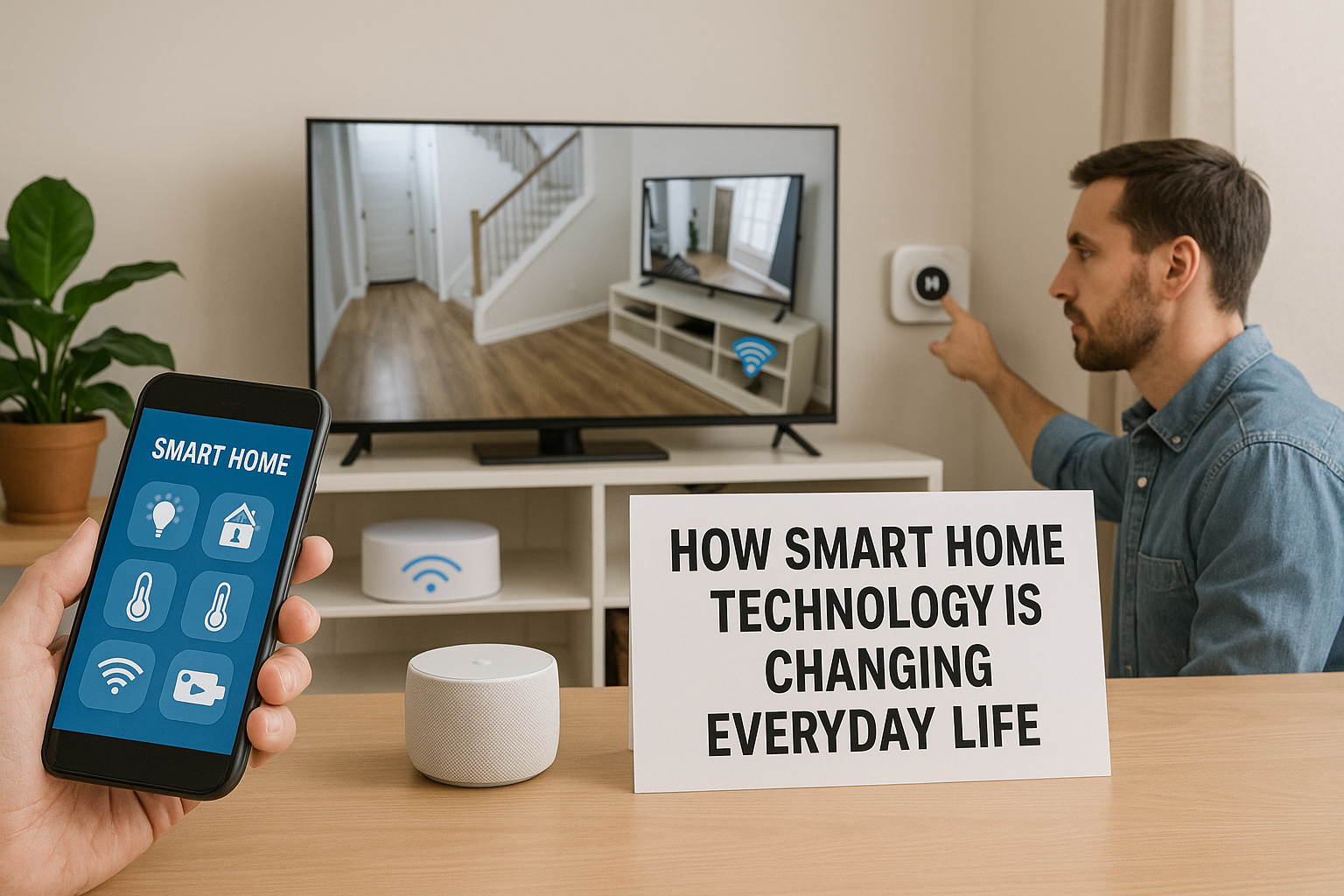What Is Smart Home Technology?
Smart home technology refers to systems and devices that automate tasks and respond to user behavior through connectivity, sensors, and artificial intelligence. These include:
-
Smart speakers (e.g., Amazon Echo, Google Nest)
-
Smart lights, locks, thermostats
-
Wi-Fi-enabled appliances and security cameras
Together, they create an intelligent, responsive living environment.
Evolution of Smart Homes
The journey to today’s smart homes began decades ago:
-
1990s: Remote controls and timers
-
2000s: Early home automation hubs
-
2010s: Voice assistants (Alexa, Google Assistant) changed the game
-
2020s and beyond: Full home ecosystems now integrate security, comfort, and energy savings
Smart homes have moved from futuristic fantasy to everyday reality.
15 Ways Smart Home Tech Is Transforming Daily Routines
-
Smart Lighting: Adjusts brightness and color based on time of day or mood.
-
Automated Thermostats: Learn your habits and optimize temperature for comfort and savings.
-
Voice Assistants: Control devices, play music, answer questions hands-free.
-
Home Security Systems: Real-time alerts, remote access, and facial recognition improve safety.
-
Smart Appliances: Fridges that suggest recipes or ovens you can preheat from your phone.
-
Energy Monitoring: See real-time usage and tips for saving electricity.
-
Smart Locks: Keyless entry via phone or voice—ideal for family and guests.
-
Pet Feeders & Cameras: Keep tabs on and feed your pet remotely.
-
Water Leak Detectors: Early warnings prevent expensive damage.
-
Smart Curtains & Blinds: Open at sunrise, close for privacy at dusk.
-
Sleep Trackers: Smart beds and wearable devices track sleep quality.
-
Health & Wellness Devices: Measure air quality, humidity, and noise levels.
-
Grocery Alerts: Fridges monitor stock levels and create shopping lists.
-
Climate Control: Adjust humidity, scent, or temperature with one command.
-
Home Office Automation: Lights, noise filters, and coffee machines synced to your work schedule.
Benefits of Smart Home Technology
Smart homes do more than look impressive—they provide tangible everyday advantages:
-
Convenience: Control your entire home from your phone or voice assistant.
-
Safety: Security systems with motion sensors, video feeds, and emergency alerts offer peace of mind.
-
Energy Efficiency: Smart thermostats, LED lighting, and energy monitors reduce power consumption and lower bills.
-
Time Management: Automations like morning routines or nighttime wind-down sequences free up mental space and decision fatigue.
These benefits help turn ordinary homes into intuitive, efficient living environments.
Challenges and Concerns
Despite the advantages, smart technology isn’t without its drawbacks:
-
Privacy and Data Security: Devices often collect sensitive data. Without proper security, users risk breaches and surveillance.
-
System Compatibility: Not all devices play well together. Fragmented ecosystems can frustrate users.
-
Cost Barriers: Initial setup—especially high-end systems—can be expensive.
-
Over-Reliance: Over-automation might cause tech dependency, and outages can disrupt routines.
To maximize the benefits, users must adopt smart tech with awareness and careful planning.
Smart Homes and the Future of Aging in Place
Smart home technology is revolutionizing elder care and independence for seniors:
-
Fall Detection: Smart sensors can alert family or emergency services immediately.
-
Medication Reminders: Voice assistants can deliver timely prompts for medications.
-
Remote Monitoring: Family members can keep track of routines or abnormal patterns remotely.
-
Voice-Controlled Lights and Thermostats: Improves accessibility without requiring physical effort.
This technology empowers seniors to stay safe and self-reliant in their own homes.
Integrating Smart Devices Seamlessly
Creating a smooth smart home experience requires:
-
Choosing a Hub: Platforms like Alexa, Google Home, or Apple HomeKit centralize control.
-
Routine Automations: Create “Good Morning” or “Leave Home” routines that activate multiple devices at once.
-
Smart Scenes: Customize lighting, temperature, and music settings for different moods or events.
Proper integration leads to a cohesive, intuitive system rather than a clutter of disconnected gadgets.
FAQs About Smart Home Technology
Q1: Is it hard to set up a smart home?
Not at all. Many devices are plug-and-play and can be controlled via smartphone apps.Q2: Can I start with one device and expand later?
Yes. Smart homes are scalable—begin with lighting or voice assistants and build from there.Q3: Are smart homes secure?
With updated firmware, strong passwords, and secure Wi-Fi, smart homes can be very safe.Q4: Do smart devices work without internet?
Some do, but most need internet or Bluetooth for full functionality.Q5: What’s the average cost of a smart home setup?
It can range from $200 for basic functionality to several thousand for fully integrated systems.
Conclusion: Smart Homes, Smarter Lives
Smart home technology is more than just convenience—it’s a shift toward intelligent, responsive living. From comfort and energy savings to safety and independence, the transformation touches every room and routine.
As the technology grows more affordable and accessible, smart homes aren’t just for tech lovers—they’re becoming a standard for modern living.
🔗 External Resource: Consumer Reports – Guide to Smart Home Technology
-



